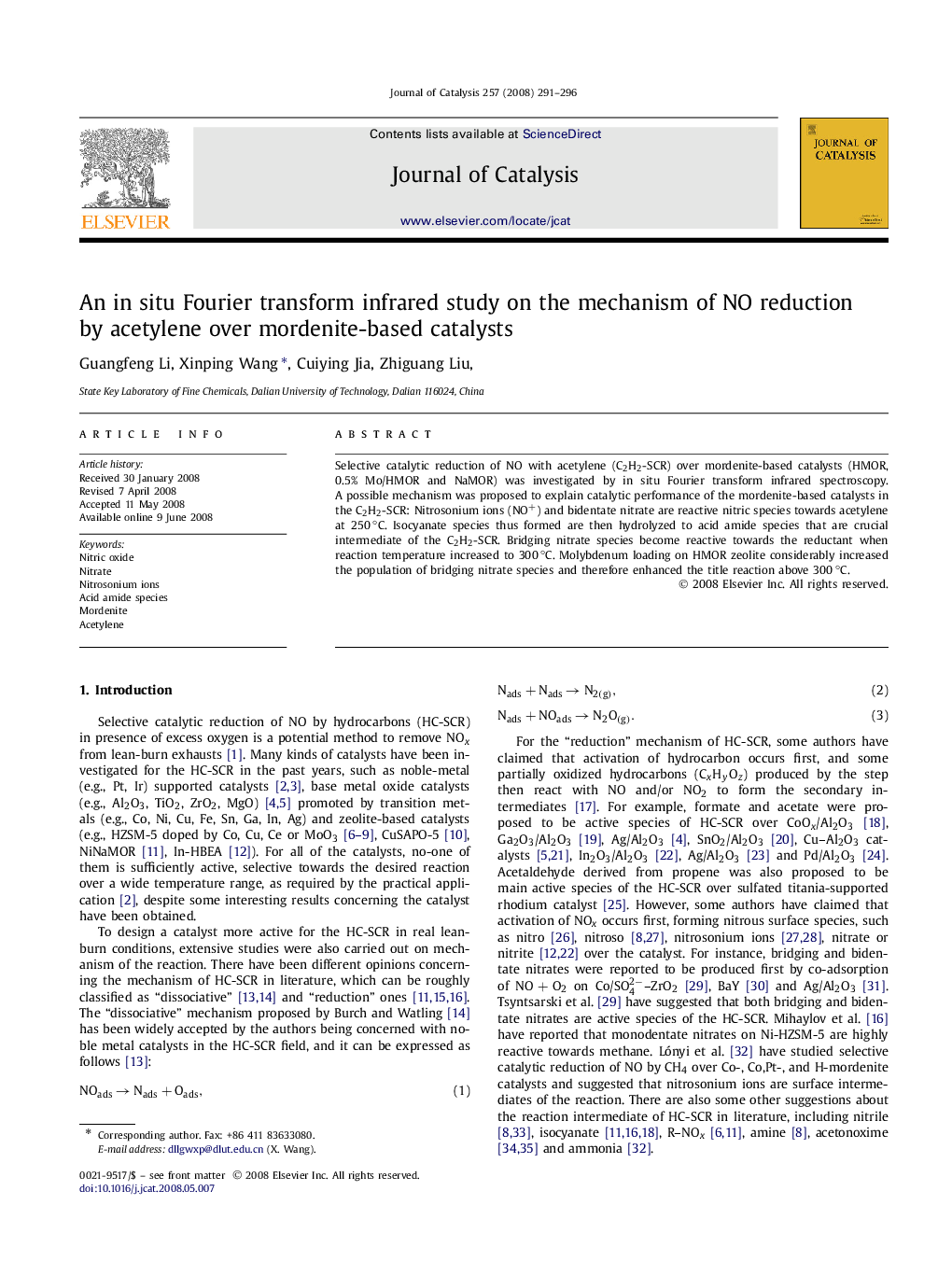| Article ID | Journal | Published Year | Pages | File Type |
|---|---|---|---|---|
| 62613 | Journal of Catalysis | 2008 | 6 Pages |
Selective catalytic reduction of NO with acetylene (C2H2-SCR) over mordenite-based catalysts (HMOR, 0.5% Mo/HMOR and NaMOR) was investigated by in situ Fourier transform infrared spectroscopy. A possible mechanism was proposed to explain catalytic performance of the mordenite-based catalysts in the C2H2-SCR: Nitrosonium ions (NO+) and bidentate nitrate are reactive nitric species towards acetylene at 250 °C. Isocyanate species thus formed are then hydrolyzed to acid amide species that are crucial intermediate of the C2H2-SCR. Bridging nitrate species become reactive towards the reductant when reaction temperature increased to 300 °C. Molybdenum loading on HMOR zeolite considerably increased the population of bridging nitrate species and therefore enhanced the title reaction above 300 °C.
